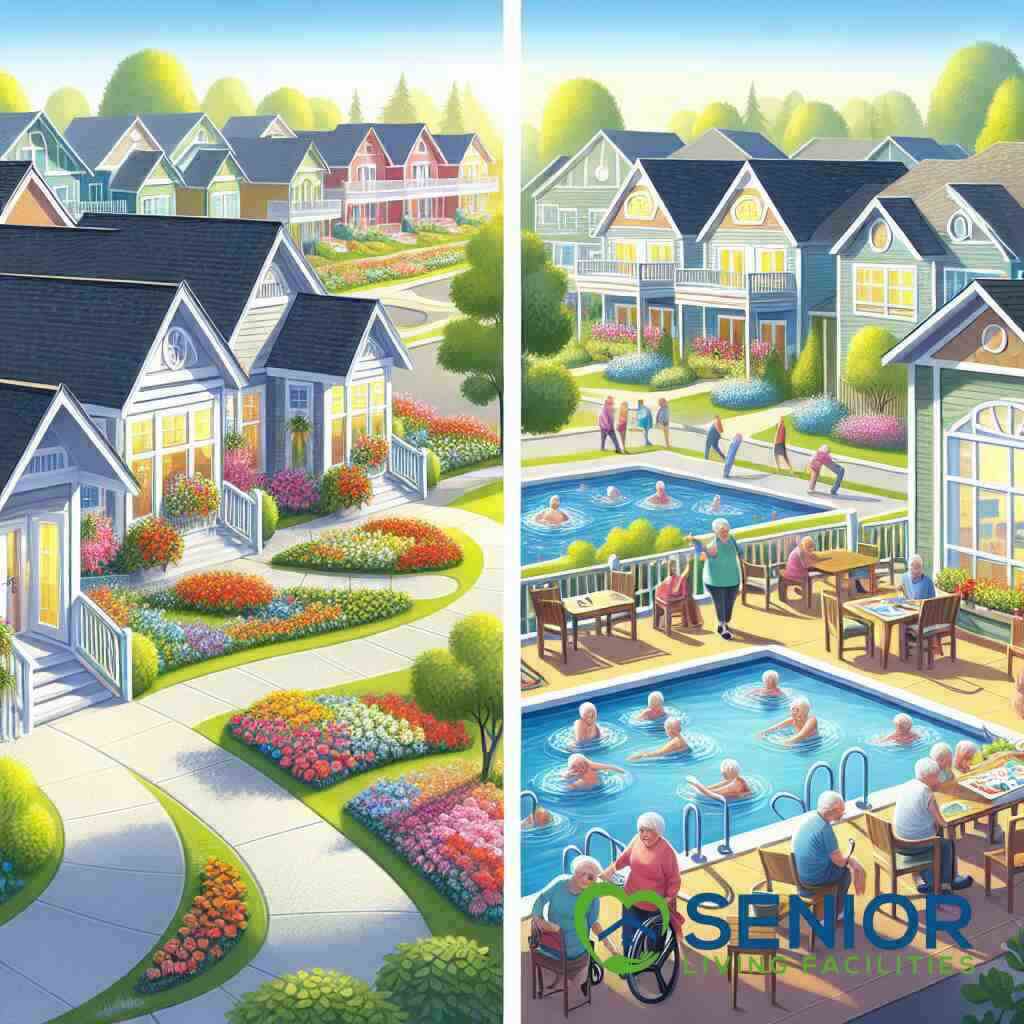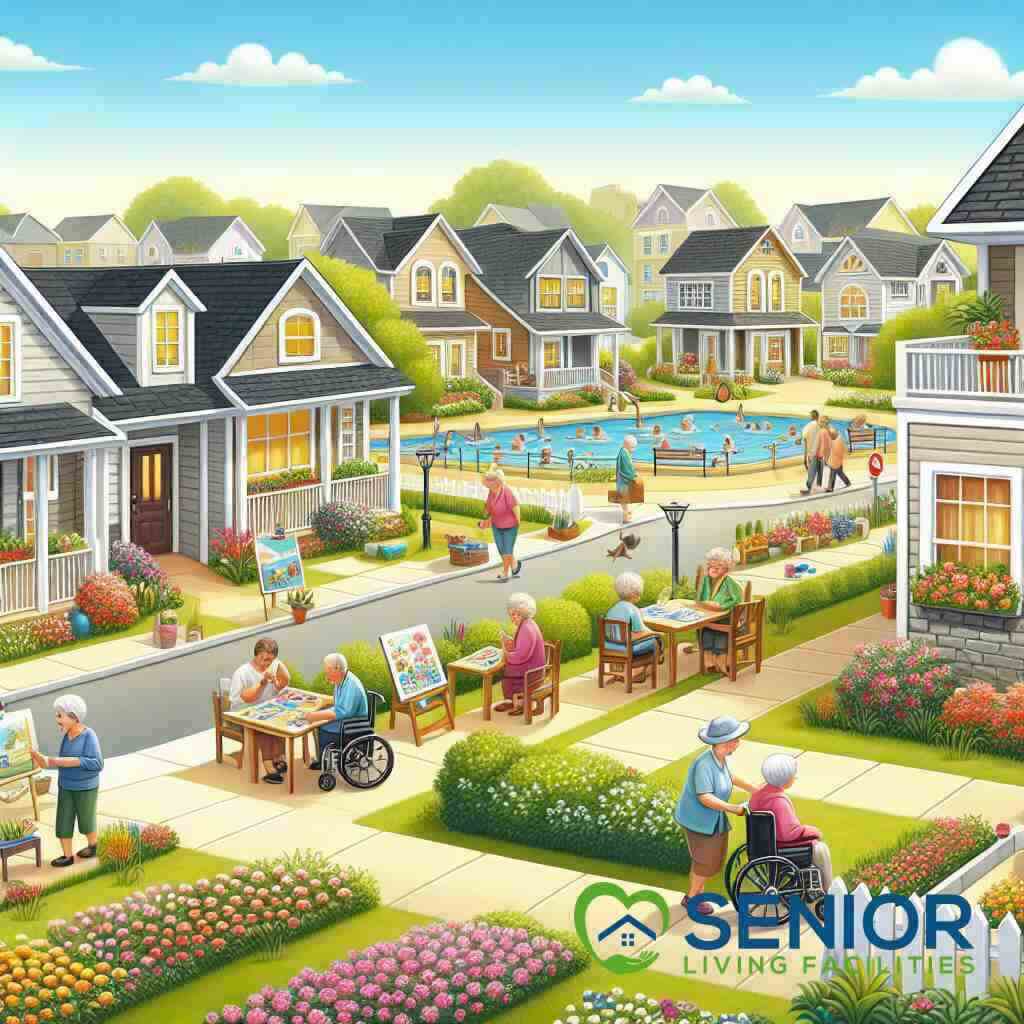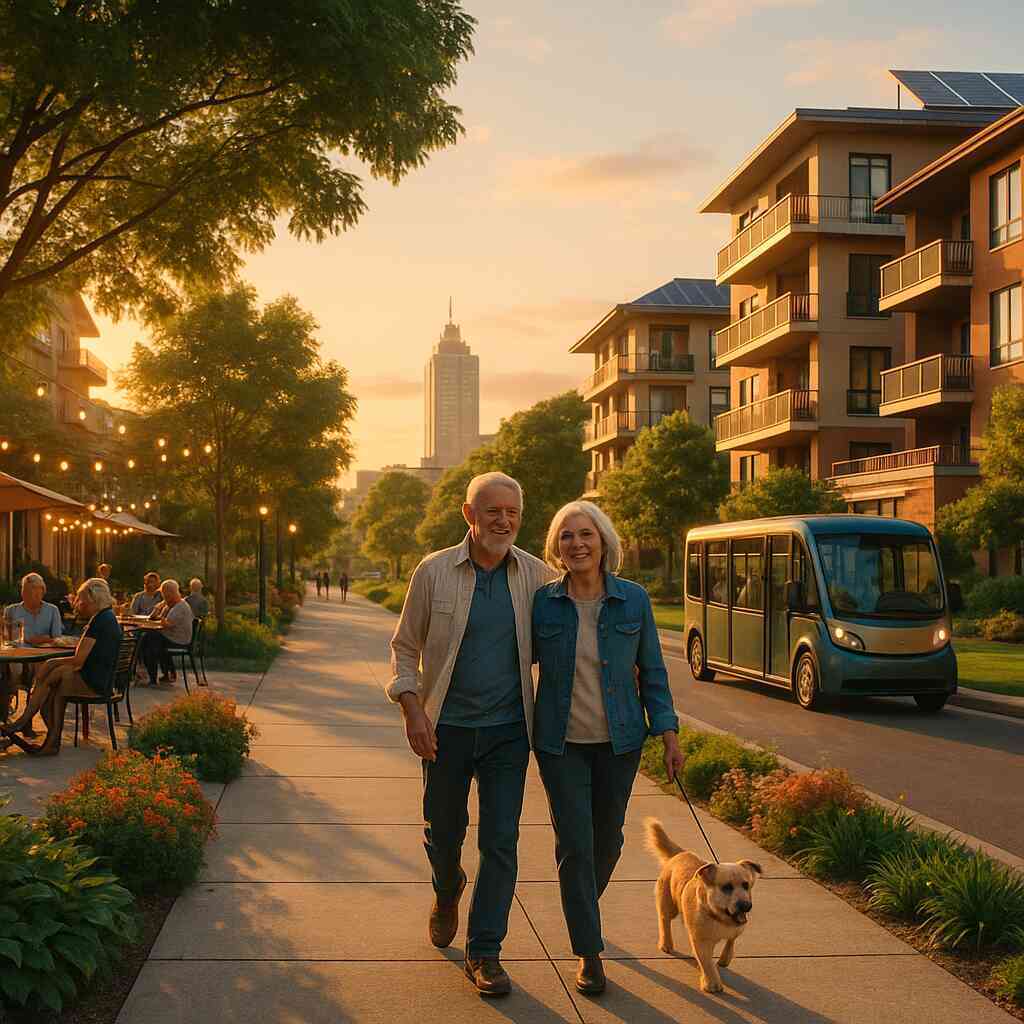
Ultimate Guide: Aging in Place vs Senior Communities
September 24, 2024
Introduction to Senior Lifestyle Choices
Exploring the concept of aging in place
Aging in place is the decision by seniors to stay in their own homes as they grow older, adapting the living environment to meet changing needs rather than moving to a senior living facility. This option allows for a significant degree of independence, comfort, and familiarity, which can positively impact mental health and overall well-being. Advances in aging-in-place technology have significantly enhanced the ability to stay safely and comfortably at home, supporting everyday tasks and medical needs through innovative solutions like emergency alert systems and telemedicine.
Aging in place is deeply rooted in the desire for continuity. Seniors often prefer the familiarity of their community, neighborhood connections, and the memories embedded in their homes. The emotional benefits of this choice are substantial, fostering a sense of belonging and identity that might be diluted in a new living environment.
Understanding senior communities and their advantages
Senior living communities offer a structured environment designed to cater to the varied needs of aging individuals. Learn more about the Best Senior Living Options in California for 2024. These communities are not just about healthcare; they are vibrant hubs where seniors can enjoy a wide range of activities, social interaction, and specialized assistance. The advantages of senior living communities include comprehensive care plans tailored to individual health needs, accessibility features designed for seniors, and a community of peers, which significantly contributes to enhancing social life.
These communities vary widely from independent living to nursing homes, offering different levels of care to suit diverse senior needs. Discover other options in Navigating Senior Living Options in Illinois 2024. By choosing a senior living community, residents can eliminate typical household burdens, such as maintenance and cooking, which becomes the community’s responsibility.
Factors influencing the decision for seniors’ living arrangements
Several key factors influence whether a senior chooses to age in place or relocate to a senior living community. These include the individual’s health status, financial situation, personal preference, and the availability of family or community support. Economic considerations play a crucial role, as modifying a home for aging in place can be costly, and similarly, the fees for senior living communities can be substantial.
Personal values and lifestyle choices also weigh heavily in this decision. For some, staying close to family and maintaining a lifetime’s worth of memories at home is paramount. For others, the appeal of being part of a community of peers and enjoying a carefree lifestyle with amenities and social activities is more compelling. Understanding these factors can help seniors and their families make informed decisions about their living arrangements as they age.
Aging in Place: Embracing Independence at Home
Defining aging in place and its core benefits.
Aging in place refers to the decision by seniors to live in their own homes or community for as long as possible as they age. This choice taps deeply into the psychological comforts of familiarity and independence, allowing seniors to remain in a cherished environment surrounded by memories and personal belongings. The core benefits of aging in place include maintaining a sense of autonomy, having a continuous connection with one’s community, and, often, a perceived improvement in quality of life. Aging comfortably at home for seniors in 2024 emphasizes the importance of familiar surroundings, which can provide emotional and physical stability.
Financial considerations for modifying existing homes
Adapting a home to fit the needs of an aging individual often requires multiple modifications, which can be costly. Ramps may need to be installed, doorways widened for wheelchair access, and bathrooms adapted to enhance safety. These modifications, while essential for safety and accessibility, require a significant financial investment. Therefore, it’s crucial to plan financially for these home adaptations. Home modification for the elderly needs to be well thought out, with consideration given to both immediate and long-term needs.
Aging in place technology and how it supports independence.
The role of technology in supporting aging in place cannot be overstated. Innovative solutions include medical alert systems, video monitoring, smart home technologies, and telemedicine services that provide emergency assistance, medical consultations, and daily convenience at the touch of a button. These technologies not only bolster safety but also empower seniors to manage their health proactively and maintain their independence. Explore more on how technology is shaping senior living in The Evolution of HealthCare in Senior Living. They effectively reduce the feeling of isolation and help seniors stay connected to their loved ones and healthcare providers.
Professional care options for in-home senior care
For many seniors, professional in-home care becomes a necessity as part of aging in place. This can range from part-time help for daily activities to full-time medical care. Professional caregivers can assist with various services, from routine household tasks to personal care and medical procedures, ensuring that seniors receive the necessary care within the comfort of their homes. The professional care options for seniors staying at home vary widely and can be customized to fit the individual’s needs, making aging in place a viable and comforting option.
Senior Living Communities: A Hub of Comprehensive Care
Overview of different types of senior living facilities
Senior living facilities come in various forms, each designed to cater to different levels of need and independence. Find out more in the Ultimate Guide to Senior Living in Utah 2024. From independent living communities that allow seniors to enjoy retirement without the burdens of home maintenance to assisted living facilities that provide daily support with activities such as bathing, dressing, and medication management. There are also nursing homes for those requiring 24-hour medical oversight and specialized care units like memory care for individuals with dementia or Alzheimer’s. Understanding the distinct features and offerings of each type can help in making an informed decision aligning with the individual’s or family’s needs.
Comparison of assisted living vs home care
Deciding between assisted living and home care hinges on the specific care needs and personal preferences of the senior. Assisted living facilities offer a social environment, with easy access to medical care, meals, and group activities, all within a secure setting. In contrast, home care provides tailored services in the comfort of one’s home, preserving a greater degree of independence and familiarity for the senior. This discussion should include considerations about the level of required medical attention and the senior’s desire for social interaction.
Community facilities and activities designed for seniors
Living in a senior community isn’t just about receiving care; it’s about enriching the quality of life. Many communities offer a range of facilities like fitness centers, pools, art studios, libraries, and event spaces. Activities for seniors in senior living facilities are thoughtfully curated to promote physical health and social engagement. From yoga classes and book clubs to craft workshops and cultural outings, these activities provide opportunities for seniors to explore new interests and forge meaningful connections with peers.
Safety, comfort, and social benefits of living in senior communities
Safety and comfort are paramount in senior communities, with features like emergency call systems, secure entrances, and on-site medical staff. The design of these facilities often includes accessibility needs with ramps, non-slip floors, and other safety adaptations. Beyond the physical aspects, the social environment of a senior community offers profound mental health benefits. Residents can enjoy regular social interactions and community engagement, which are crucial in combating the feelings of isolation and loneliness often experienced by seniors living alone. These communities create a vibrant atmosphere that can significantly enhance the daily lives of their residents, making them a compelling choice for many families.
Making a choice: Key Factors to Consider
Evaluating the costs and accessibility of both options
When considering aging in place vs senior communities, two pivotal factors are costs and accessibility. Learn more about affordability in Ultimate Guide to Affordable Senior Living in 2024. Aging in place may require significant initial investment for home modifications like bathroom adjustments, widened doorways, and the incorporation of senior living technology. On the other hand, senior communities, while potentially higher in regular expenses, often include these modifications and accessibility features as part of the package, making them a more feasible option over time. Detailed financial planning is essential to compare these costs effectively, keeping in mind both short-term needs and long-term sustainability.
Assessing the need for social connections and activities
Social connections and opportunities for engaging in activities play a critical role in the well-being of seniors. Senior living communities typically offer a rich tapestry of social activities that foster interaction and help maintain an active lifestyle. For those who prefer aging in place, maintaining social connections might require more effort, necessitating the arrangement of transportation to community centers or events, which can sometimes present logistical challenges. It’s crucial for seniors and their families to realistically assess how each option aligns with the individual’s social needs and abilities.
Decision-making tools and resources for elderly care
Navigating the myriad options for elderly care requires accessible, reliable information. Resources such as the Senior Living Facilities’ comparison tool offer a comprehensive analysis-side-view of both aging-in-place adjustments and senior community offerings, helping families make more informed decisions based on personalized needs and preferences. These tools often include customer reviews, a breakdown of services, and transparency regarding costs, all of which are instrumental in choosing the right care approach.
Aging population trends and their impact on senior care choices
The aging population is growing, and with it, the dynamics of senior care are evolving. Trends affecting senior care include an increase in demand for both in-home care options and more diverse and inclusive senior living communities. This demographic shift encourages the continuous adaptation and improvement of senior care structures and services to better meet ever-changing needs. Acknowledging these trends is vital for families and seniors preparing for future care who must consider long-term implications on lifestyle and care quality when making their decision.
Conclusion: Planning for an Empowered Senior Lifestyle
Summarizing the Pros and Cons of Aging in Place vs Senior Communities
When deciding between aging in place and moving to a senior community, the key lies in understanding the pros and cons of each option. Aging in place offers the comfort of familiarity and independence, allowing seniors to remain in an environment they have long cherished. However, it may necessitate costly adaptations and increased dependency on technology and in-home care services to maintain a safe living space.
Conversely, senior communities provide comprehensive care and easy access to medical services, activities, and social interactions, which are crucial for mental health and well-being. These facilities ensure safety with designed environments and constant care availability, but might mean relinquishing some personal autonomy and facing higher ongoing living costs. Understanding these trade-offs is crucial in making a decision that best suits the senior’s lifestyle preferences and care needs.
Resources Available Through Senior Living Facilities for Making Informed Choices
Senior Living Facilities offer a plethora of resources that guide families and seniors through the maze of options available for elderly care. For further guidance, see Your Guide to Senior Living in Pennsylvania 2024. Our platform provides tools for comparing different senior living options, from traditional nursing homes to modern independent living communities. Each listing includes detailed information about the services, amenities, and costs associated with each facility, making it easier to evaluate what each community offers. These resources are designed to empower users by providing the necessary information to make informed, confident decisions about senior care.
Encouraging a Proactive Approach to Senior Lifestyle Planning
Planning for senior living should not be reactive but a proactive process that begins long before the need arises. Families and seniors are encouraged to discuss preferences, financial capabilities, and potential healthcare needs early on. This foresight allows for a smoother transition, whether the decision is to age in place or move to a senior community. It’s also essential to regularly review and adjust these plans as circumstances change, ensuring that the chosen approach continues to align with the evolving needs and wishes of the senior.
At Senior Living Facilities, we understand that each senior’s needs and preferences are unique. By providing comprehensive and up-to-date information, we help families navigate the complexities of senior care, ensuring that every senior has access to a living situation that best suits their desires and requirements for a fulfilling, secure, and independent life in their later years. Whether you are considering the detailed modifications required for aging in place or exploring the vibrant life that awaits in a senior community, our resources are here to guide you every step of the way.
Frequently Asked Questions
Question: What are the main differences between aging in place and moving to a senior community as outlined in the “Ultimate Guide: Aging in Place vs Senior Communities”?
Answer: The main differences highlighted in the guide include the independence and familiarity offered by aging in place, where seniors can stay in their own homes surrounded by personal memories and community ties. On the other hand, senior communities provide comprehensive care, social activities, and accessibility, ensuring safety and reducing daily maintenance burdens. Each option has its financial considerations and plays a crucial role in a senior’s overall well-being, depending on their health status and personal preferences.
Question: How do Senior Living Facilities help families compare costs and services between senior communities and home care options?
Answer: Senior Living Facilities offers a comprehensive comparison tool on their platform, which allows families to evaluate different senior living and home care options based on their specific needs. This tool includes detailed information about services, amenities, and costs associated with each option, helping families make financially informed decisions about the best care setting for their loved ones. Additionally, the platform provides resources for understanding the long-term financial implications of both aging in place and living in senior communities.
Question: Can Senior Living Facilities assist in finding contractors or professionals to make home modifications for aging in place?
Answer: Yes, Senior Living Facilities can assist in this area. While their primary focus is on helping families find the best senior living communities, they also offer resources and partnerships that can help seniors make necessary home modifications for safe aging in place. They can connect seniors with trusted contractors who specialize in accessibility improvements and adaptations like bathroom modifications, installation of ramps, and wider doorways to accommodate mobility aids.
Question: What types of activities can seniors expect in the communities for seniors 55+ that are partnered with Senior Living Facilities?
Answer: Seniors in communities associated with Senior Living Facilities can enjoy a variety of activities designed to enhance physical health and foster social connections. These activities range from fitness programs like yoga and swimming to social events such as book clubs, arts and crafts sessions, and cultural outings. These activities range from fitness programs like yoga and swimming to social events such as book clubs, arts and crafts sessions, and cultural outings. Each community aims to cater to diverse interests, ensuring that there are ample opportunities for seniors to engage in hobbies and socialize with peers in a vibrant and supportive environment. Learn more about activities in senior communities.




